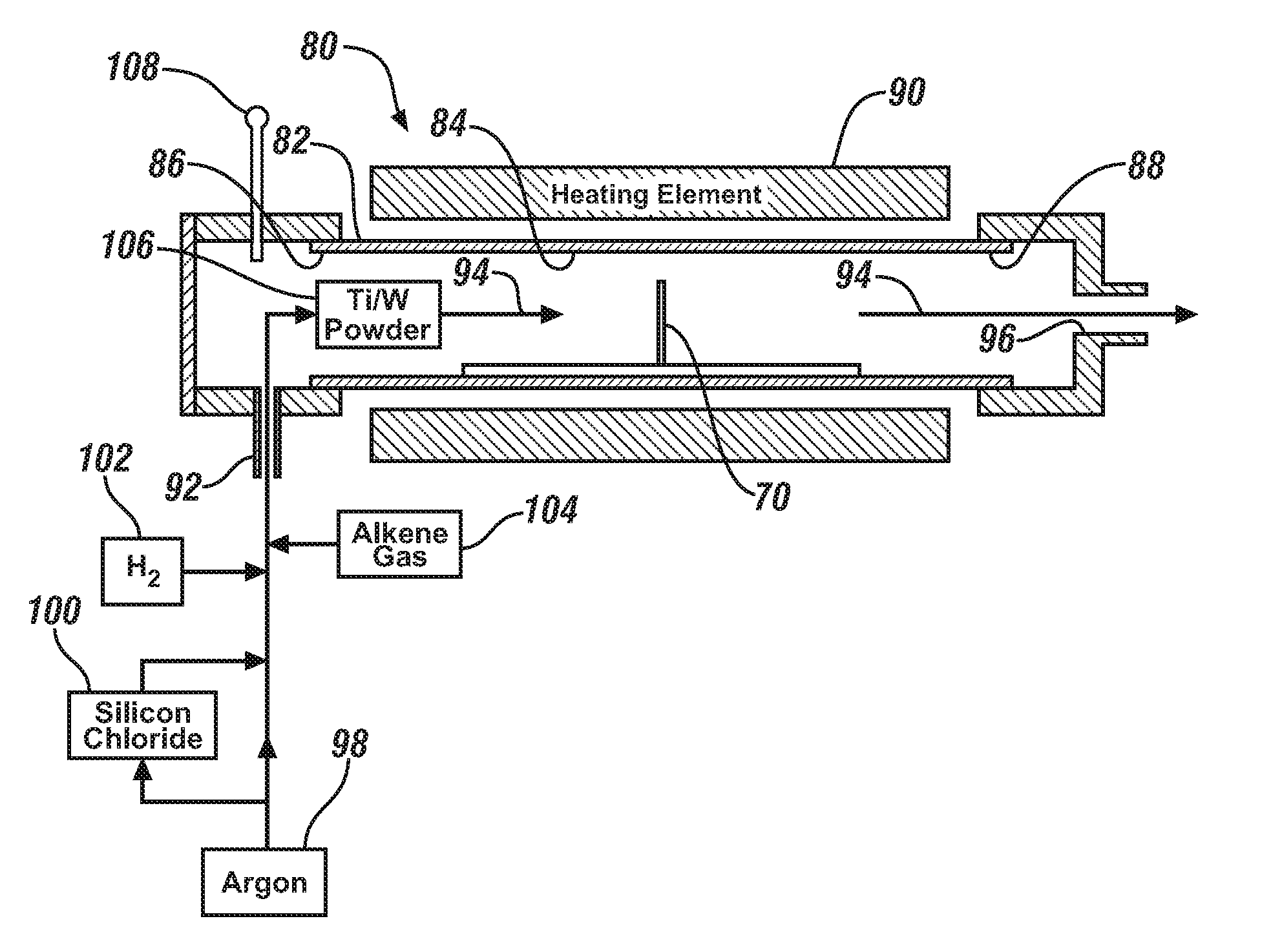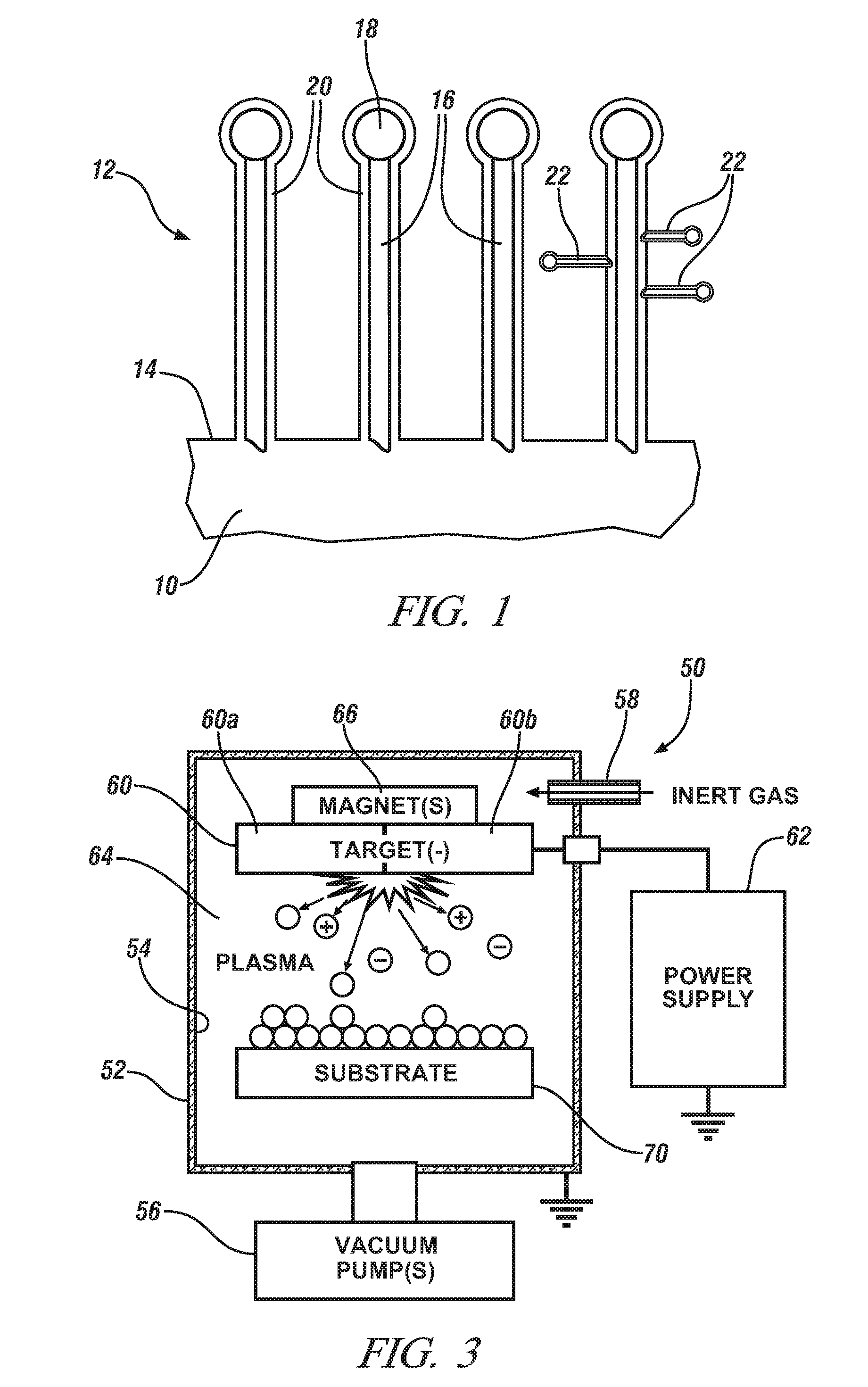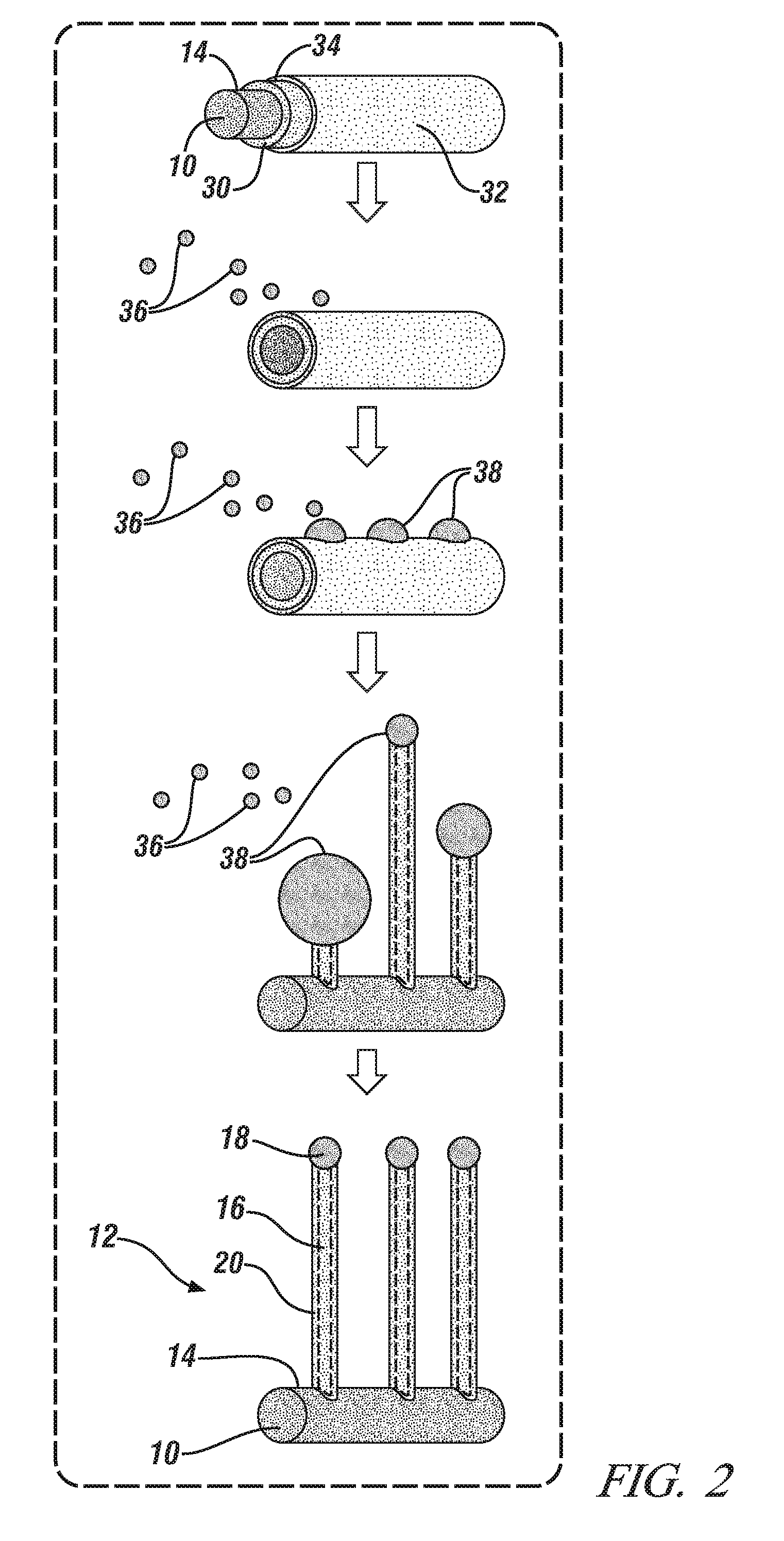Microfiber supported metal silicide nanowires
a technology of metal silicide and nanowires, which is applied in the manufacture of cables/conductors, chemical vapor deposition coatings, crystal growth processes, etc., can solve the problems of unsuitable methods, nanowires that cannot be reliably, precisely and precisely manufactured, and the nanowires that cannot be made by the same technique or tungsten silicide-based nanowires on the microfiber support have not been developed. , to achieve the effect of favorable characteristics of nanowir
- Summary
- Abstract
- Description
- Claims
- Application Information
AI Technical Summary
Benefits of technology
Problems solved by technology
Method used
Image
Examples
example
[0058]This example describes a specific process by which an arrangement of titanium silicide-based nanowires was grown on the surfaces of many individual carbon microfibers. Tungsten-based silicide nanowires could have been grown by simply depositing tungsten on the exterior surfaces of the carbon microfibers instead of titanium during the magnetron sputtering portion of the process. The same general observations and data trends that are discussed below for the titanium-silicide base nanowires would also be expected for the tungsten-based silicide nanowires.
[0059]A commercially-available carbon paper comprised of a large quantity of carbon microfibers measuring 5 μm to 10 μm in diameter was obtained from E-TEK, a division of De Nora North America (Somerset, N.J.). A thin-film layer of pure titanium was deposited onto the surfaces of the carbon microfibers to a thickness of about 1 μm. The deposition of the titanium layer was accomplished by radio frequency (RF mode) magnetron sputte...
PUM
| Property | Measurement | Unit |
|---|---|---|
| thickness | aaaaa | aaaaa |
| thickness | aaaaa | aaaaa |
| temperature | aaaaa | aaaaa |
Abstract
Description
Claims
Application Information
 Login to View More
Login to View More - R&D
- Intellectual Property
- Life Sciences
- Materials
- Tech Scout
- Unparalleled Data Quality
- Higher Quality Content
- 60% Fewer Hallucinations
Browse by: Latest US Patents, China's latest patents, Technical Efficacy Thesaurus, Application Domain, Technology Topic, Popular Technical Reports.
© 2025 PatSnap. All rights reserved.Legal|Privacy policy|Modern Slavery Act Transparency Statement|Sitemap|About US| Contact US: help@patsnap.com



